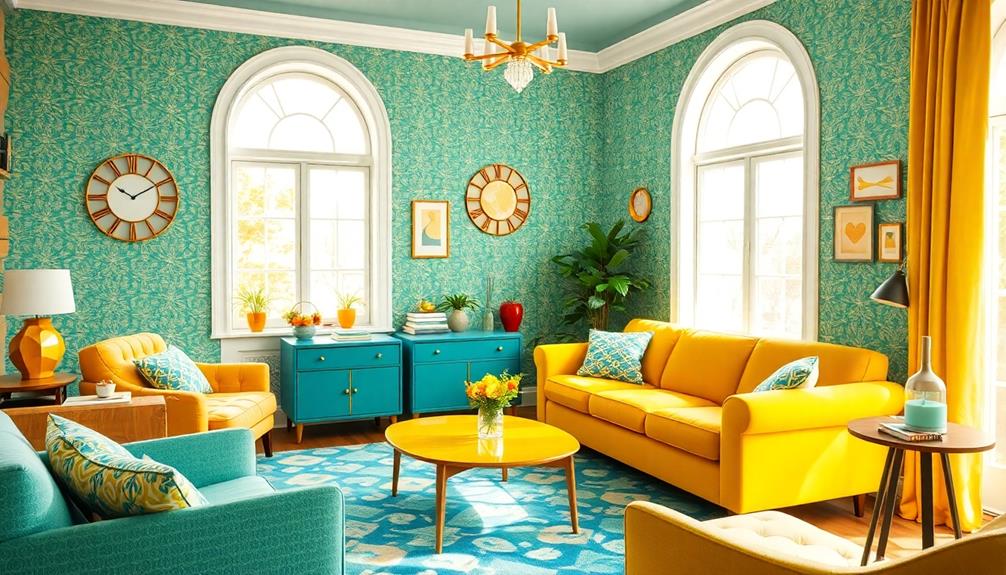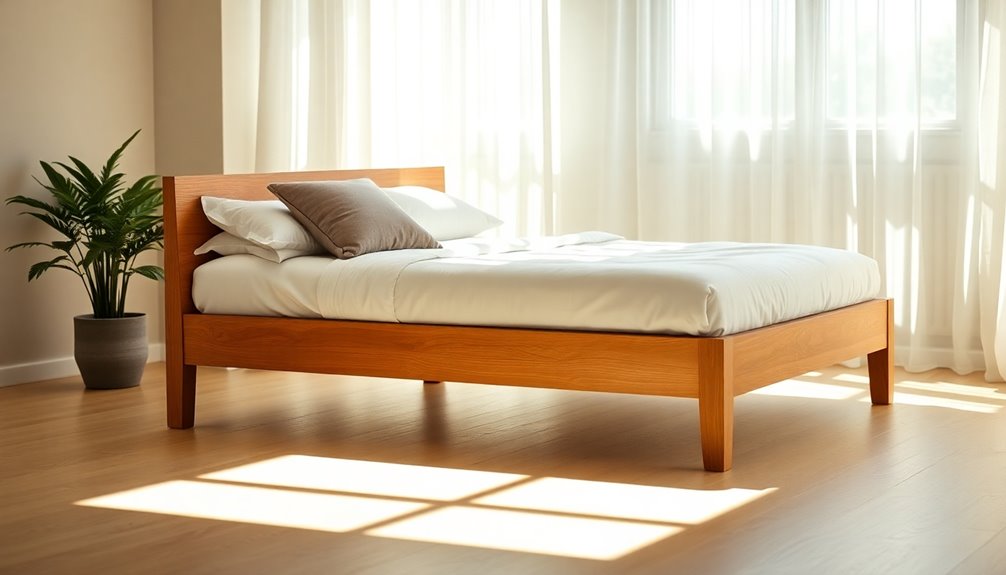Victorian turrets represent a beautiful combination of historical significance and architectural elegance that will enchant you. These intricate structures have evolved from their medieval origins as defensive elements to charming architectural features. With their asymmetrical facades and detailed designs, turrets enhance the visual appeal of Victorian homes. They serve as a symbol of status and evoke a longing for a romanticized past. Today, modern adaptations incorporate eco-friendly materials and versatile spaces, keeping them relevant in modern design. It is crucial to take care of these exquisite features to preserve their charm. There is a wealth of information to uncover about their timeless allure and contemporary innovations waiting for you.
Key Takeaways
- Victorian turrets originated from medieval castles, emphasizing defense and strategic design, which evolved into ornamental architectural features.
- Characterized by asymmetrical facades and intricate detailing, turrets enhance the visual appeal of Victorian homes.
- They symbolize wealth and status, reflecting a romanticized view of medieval aesthetics prevalent during the Victorian era.
- Modern innovations include eco-friendly materials and multifunctional spaces, keeping turrets relevant in contemporary design.
- Restoration challenges include sourcing original materials and balancing modern safety standards with historical integrity, highlighting the complexities of maintaining their elegance.
Historical Roots of Turrets

The historical roots of turrets can be traced back to medieval castles, where they served defensive purposes and provided strategic vantage points.
As you explore the evolution of architecture, you'll notice how these structures changed from purely functional elements to ornamental features in domestic designs. This shift is particularly evident in styles where form and decoration became intertwined, elevating the aesthetic appeal of buildings. In many regions, hacienda architecture elements, such as high, arched doorways and intricately designed courtyards, exemplify this fusion of function and beauty. These features not only served practical purposes but also imparted a unique cultural charm to domestic spaces.
In the Victorian era, turrets became synonymous with the Queen Anne style, enhancing the castle-like aesthetics of homes. This fascination with romanticized medieval architecture marked a shift towards grandiosity, showcasing the elegance of the Victorian period.
Turrets symbolize the adaptation of historical styles to the evolving tastes of the time, elevating the overall aesthetic and historical significance of homes. Their presence continues to define Victorian-style architecture, enchanting you with their unique charm.
Architectural Features and Styles

Turrets are just one of the many distinctive architectural features that define Victorian homes, contributing to their unique charm and character.
When you explore these magnificent structures, you'll notice several key elements that stand out:
- Asymmetrical Facades: Victorian homes often boast irregular shapes, enhancing their visual intrigue and offering a playful aesthetic.
- Ornate Details: From intricate trim work to decorative shingling, the craftsmanship showcases the era's dedication to beauty and artistry.
- Expansive Porches: These inviting spaces, often adorned with elaborate railings, create a welcoming atmosphere and encourage outdoor enjoyment.
Together, these features create a rich tapestry of design that captures the essence of the Victorian style, making each home a true architectural gem.
Care and Maintenance Guidelines

Maintaining the beauty and integrity of your Victorian turret requires regular attention and care. Start with routine inspections to spot any signs of water damage or deterioration.
It's essential to check the exterior; peeling paint, cracked sealants, and damaged shingles can lead to bigger issues. Make sure to repaint and seal surfaces as needed to protect against the elements.
Don't forget about the roof—inspect it for loose or missing shingles to prevent leaks. Trim overhanging tree branches that could cause storm damage, and consider scheduling professional inspections for thorough assessments.
Contemporary Turret Innovations

Innovative designs are breathing new life into contemporary turret structures, merging traditional elegance with modern functionality.
You'll find that today's turrets often incorporate cutting-edge materials and techniques, making them both striking and practical. These advancements include the use of lightweight alloys and advanced polymers that enhance durability without adding unnecessary weight. A mylar and foil balloon comparison can be drawn when considering how these materials combine resilience and flexibility, allowing for long-lasting performance even under extreme conditions. This innovation ensures that modern turrets are not only aesthetically appealing but also highly effective in various applications.
Here are three significant innovations:
- Eco-Friendly Materials: Sustainable options like reclaimed wood and recycled metals are becoming popular, reducing environmental impact while enhancing aesthetic appeal.
- Smart Technology: Integrated smart home systems allow for automated lighting, climate control, and security, making living in a turret more convenient.
- Multifunctional Spaces: Contemporary turrets are designed as versatile spaces, serving purposes like home offices, reading nooks, or entertainment areas, maximizing their functionality.
These advancements elevate the charm of turrets while meeting modern needs, ensuring they remain relevant in today's architectural landscape.
Cultural Significance and Symbolism

Often regarded as a hallmark of Victorian architecture, turrets carry deep cultural significance and symbolism that resonate with themes of nostalgia and grandeur.
When you gaze upon a turreted home, you're drawn into a world that evokes romanticized medieval aesthetics, reflecting a fascination with history and elegance.
These architectural features stand as representations of the Victorian era's love for embellishment and dramatic design.
Turrets symbolize not just the wealth and status of their owners but also a collective yearning for the past.
They transform ordinary homes into striking landmarks, acting as visual anchors in neighborhoods.
Turrets in Modern Home Design

Turrets are making a stylish comeback in modern home design, adding a unique flair to contemporary architecture.
You'll find them not just on grand estates, but also in cozy homes, blending traditional charm with modern aesthetics.
Here are three ways turrets are being integrated today:
- Functional Spaces: Turrets can serve as reading nooks, office spaces, or cozy retreats, maximizing light and views.
- Diverse Roof Styles: From conical to mansard, various roof designs enhance the visual impact and character of the home.
- Architectural Statements: Turrets act as focal points, drawing attention and elevating the overall design without overwhelming the structure.
Embracing turrets in modern design truly merges the past with the present, creating homes that stand out beautifully.
Challenges in Restoration Efforts

Restoring turrets in historic homes presents a unique set of challenges that can complicate preservation efforts.
You'll often face difficulties sourcing original materials, as many are no longer produced. This can lead to compromises in authenticity when repairs are necessary.
Additionally, maneuvering local regulations and zoning laws can be intimidating, especially if the home is in a historic district.
You might also encounter structural issues, like water damage or rot, which require careful assessment and skilled craftsmanship to resolve.
Balancing modern safety standards with the turret's historical integrity further complicates the process.
Ultimately, committing to thorough research and enlisting expert help can greatly ease these challenges and guarantee your restoration remains true to its Victorian roots.
Frequently Asked Questions
What Materials Are Commonly Used in Constructing Victorian Turrets?
When constructing Victorian turrets, you'll commonly use materials like wood, brick, and stone. These choices not only support structural integrity but also enhance the ornate aesthetic that defines the classic Victorian architectural style.
How Do Turrets Affect a Home's Resale Value?
Isn't it fascinating how unique features can elevate a home's appeal? Turrets considerably enhance resale value, attracting buyers with their distinctive charm and historical allure, making your property stand out in a competitive market.
Are There Specific Building Codes for Turreted Homes?
Yes, there are specific building codes for turreted homes. You'll need to check local regulations, which often cover structural integrity, height restrictions, and safety standards. Consulting with local authorities guarantees your design meets all necessary requirements.
Can Turrets Be Added to Existing Homes?
Imagine your home crowned with a whimsical turret, transforming its character. Yes, you can add turrets to existing homes, but make certain they blend harmoniously with your structure's style and comply with local building codes.
What Are the Best Colors for Painting a Turret?
When painting a turret, opt for colors that complement your home's overall palette. Bold hues like deep blue or rich burgundy can add drama, while softer shades like light gray or pastel tones create a charming, inviting look.
Conclusion
In exploring Victorian turrets, you've uncovered a blend of history and elegance that continues to inspire modern design. Imagine a charming Victorian home, complete with a stunning turret that not only enhances its aesthetic but also serves as a cozy reading nook. This enchanting feature invites you to appreciate the intricate craftsmanship of the past while envisioning its place in contemporary architecture. Embracing these timeless elements can truly transform your living space into a masterpiece of elegance. Incorporating **Indonesian design principles** into the Victorian aesthetic creates a harmonious blend of rich textures and natural materials, offering a unique juxtaposition of styles. Imagine the warmth of teak wood and the tranquility of traditional Indonesian motifs seamlessly merging with the grandeur of the turret, enhancing both its historical charm and modern-day appeal. This fusion not only celebrates the beauty of cultural diversity but also elevates your space into a serene yet timeless retreat.









